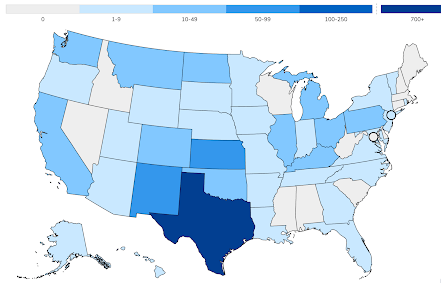Nothing has been said so far by either HHS or the White House that would shed light on the reason for her firing. Stories have been flying around about disquiet among CDC's rank and file employees following (1) the August 11 shooting at CDC headquarters in Atlanta that resulted in the death of a Dekalb County police officer, (2) mass layoffs at the CDC since January, (3) increased harassment of CDC employees by (among others) anti-vaxxers, and (4) chaos surrounding RFKJr's relentless dismantling of CDC's vaccine infrastructure, including the dismissal of all members of the agency's vaccine advisory panel and defunding mRNA vaccine research. (CBS News; NPR)
It hardly needs to be said that Dr. Monarez did not have a hand in any of these events and could hardly have turned the agency around against headwinds like these in less than a month on the job. Maybe Federal Housing Finance Agency Director Bill Pulte can unearth something wrong with her (pre-confirmation) home mortgage application, which seems to be the administration's preferred mode of political harassment these days (NBC, Aug. 27).
At this stage, it appears that the dark days at the CDC aren't going to lighten up anytime soon. And that's not good news for the rest of us.
Elections have consequences.
UPDATE (10:09pm CDT):
Late-breaking reports from the NY Times (and WaPo):
- Sources say the director was told by RFKJr to resign or be fired. The immediate issue was her refusal to support the unscientific policy against vaccines that had played out at HHS over the past 7 months.
- She was also told to fire key senior officials evidence-based policies toward vaccines differed from the Secretary's.
- Monarez refused to fire the senior officials and refused to resign.
- As of this evening:
- Monarez was fired as director of CDC. "[A]t 9:30 p.m. [EDT], a spokesman for President Trump, Kush Desai, said in an email message that Dr. Monarez had been terminated. . . . Susan Monarez is not aligned with the President’s agenda of Making America Healthy Again,” Mr. Desai wrote. . . . "Since Susan Monarez refused to resign despite informing HHS leadership of her intent to do so, the White House has terminated Monarez from her position with the C.D.C.”
- The following senior officials have resigned:
- Dr. Debra Houry, the C.D.C.’s chief medical officer;
- Dr. Demetre Daskalakis, who ran the center that issues vaccine recommendations;
- Dr. Daniel Jernigan, who oversaw the center that oversees vaccine safety; and
- Dr. Jennifer Layden, who led the office of public health data.
- Reactions to the firing and the resignations have been swift:
- Dr. Mandy Cohen, who ran the agency during the second half of the Biden administration, called the officials “exceptional leaders who have served over many decades and many administrations,” and warned that “the weakening of the C.D.C. leaves us less safe and more vulnerable as a country.”
- Dr. Anne Schuchat, the C.D.C.’s principal deputy director until her retirement in May 2021, called them “the best of the best.” “These individuals are physician-scientist public health superstars,” she said. “I think we should all be scared about the nation’s health security.”










